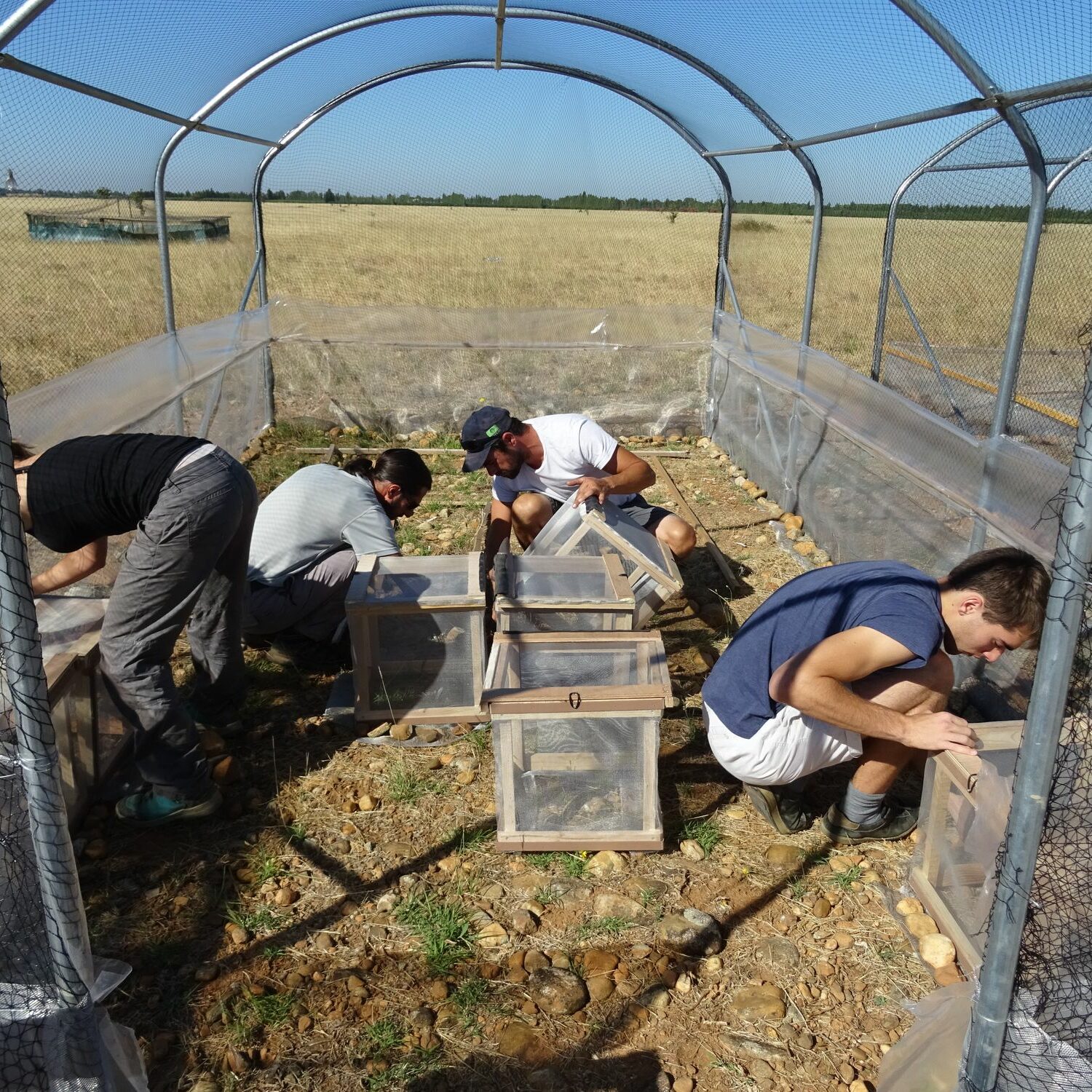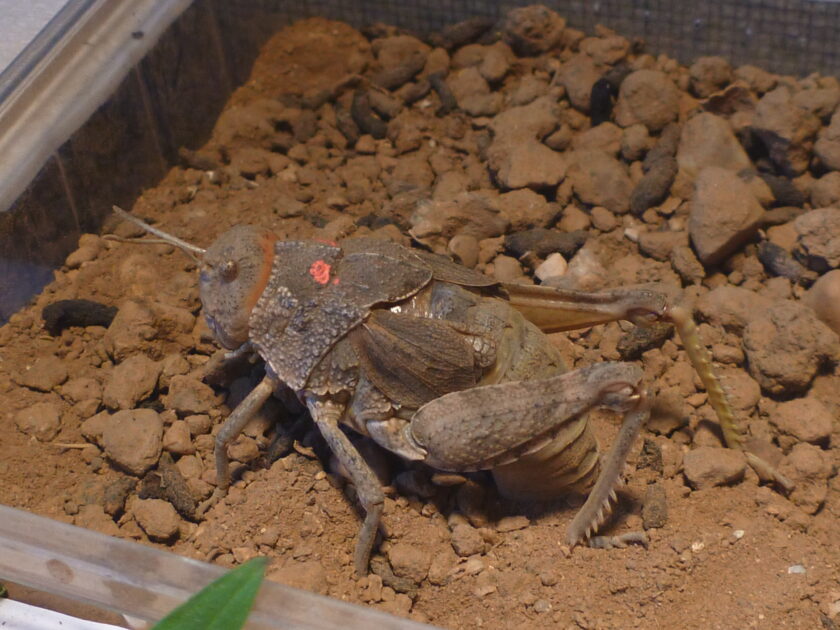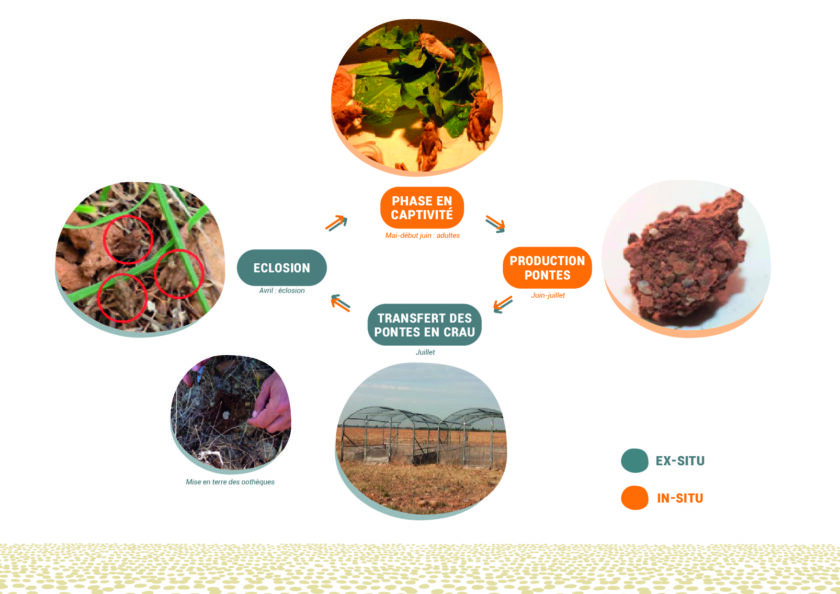Improving reproduction in captivity and starting a reintroduction programme
Cooperation with two zoological gardens will increase the number of ex situ breeding stations. The creation of a second in situ station in the Crau will improve the in situ breeding capacity to increase the number of individuals.
Reintroduction – necessary to save Prionotropis rhodanica from extinction – will be carried out on two or three sites with individuals from the rearing.


